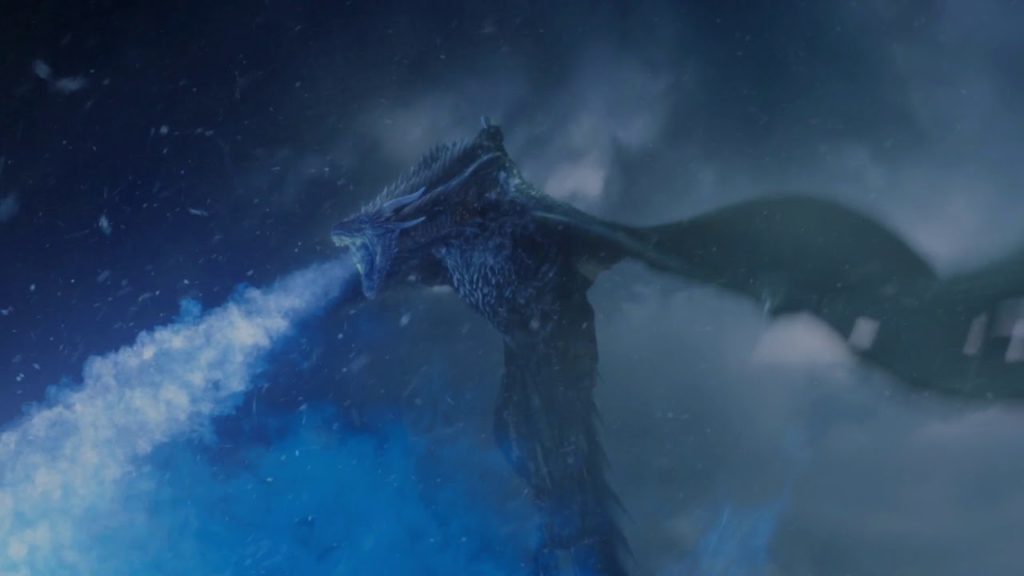At Con of Thrones we had the pleasure to speak with Paul Fairfield, the sound designer for Game of Thrones since season 3. Listening to Fairfield discuss her creative process, one truly develops a greater appreciation for detail in the show’s sound design and for the passion that informs every creative decision.
It’s important to Fairfield to maintain the integrity of the voices she gives Game of Thrones’ mythological creatures, both in terms of continuity and world building. “I feel very proud of the fact that when you hear Drogon’s [roar] you know it’s him from a distance…” Fairfield told us. “I feel very good about the fact that the essence of baby, toddler dragon is in the voice of the big bag 7/47 dragon.”
She also creates stories and private mythologies for the characters, partly because she works alone in a dark room and “[has] to find a way to keep engaged” but, more importantly, because this process helps her navigate her library of nearly two million sounds and decide how best to approach a particular character or situation.
For example, Fairfield recalls a creative impass the Game of Thrones team reached during season 3 concerning the White Walkers. David J Peterson had created a language for them called Scroff. “We tried it and it just didn’t work at all,” Fairfield said. It then occurred to her that, perhaps, the White Walkers are such omnipotent creatures that they’re “above language.” She proposed that, in lieu of speech, the White Walkers could freeze everything around them as they move. “So that was the beginning of them controlling the forces of nature,” Fairfield said.
“Developing these threads of mythology that I can attach to different characters helps with the continuing evolution of the sound design.”
As you can imagine, resurrected Viserion presented Fairfield with a wealth of creative avenues and opportunities to mythologize. She has spoken at length in the past about her love for Drogon, Rhaegal and Viserion. When she learned that one of her dragons was … eh, switching sides, she had to move him into the same “category of sound design” as the reanimated polar bear (whom she named Beary Wight) and reassess how Viserion, now icy and zombified, should sound.
Her logic is that, since the resurrected creatures are frozen, their bodies have turned rigid, with missing parts and exposed skeletons. So, it was important to incorporate the jangling of dry bone into their movements. She found a man on Etsy who sells animal bones uncovered from the desert and constructed a giant mobile in her studio from which she hung around 40 pounds of animal bones on bungy chords.
As for Viserion’s new voice, Fairfield reasoned that, since he is effectively an ice dragon now, his vocal chords must be frozen along with the rest of him. “This makes no biological sense at all,” she admitted “but it has to have an inherent logic to it. If [Viseron’s vocal chords] are frozen then they’re clacking together. So, you’ve got this deteriorated vocalization with this clacking going on and the end result is really interesting because it has to move from being alive and vibrant and full to being kind of emaciated … [with] this nasty-ass rattling sound that comes through and it’s more screechy.”
Perhaps most interesting of all is how Fairfield designed the scream Viserion makes when he destroys the Wall at the end of season 7.
“I had this idea that, in fact, [the Wights] were all channeling their souls through [Viserion]. So, the concept was that the blue fire and part of his vocals were the screams of the souls of the dead army,” Fairfield told us. “I remember e-mailing David and Dan like “Hey, what do you think?” and they were like “Ok then … sure,” she laughed.
What’s more, she recruited none other than the Burlington Bar gang to supply the voices of the damned.
This took place shortly after she’d met the crew at last year’s Con of Thrones. “I had seen their videos so I knew that they had no problem emoting in unbridled fashion,” she said. “So, I texted them and I said, “Hey guys, could you give me some tortured screams? I can’t tell you what’s it’s for but I need you to scream like you’re dying. And so they did.”
Of course, Viserion’s roar at the end of the “The Dragon and the Wolf” isn’t recognizable as the screams of hardcore Game of Thrones fans but Fairfield believes strongly that the voices of creatures should have a soul. “No matter what you do to it there’s a little essence of it that sticks and I wanted that feeling … There’s something in it that touches you somewhere primal and that’s what I wanted.”
Fairfield keeps in touch with the Game of Thrones fandom, and cites the fans as one of the reasons she puts so much thought and care into the sound design.
“The viewership is so intense on this show and most people know way ,ore about [the material] than I do … If I haven’t thought my work through people are going to pick up on that. And that’s not fair to the viewership who has stuck with the show and loves the show so.”
The post Con of Thrones exclusive: Paula Fairfield on the importance of expanding mythology and the real voices behind zombie Viserion appeared first on Watchers on the Wall.
Via http://watchersonthewall.com

No comments:
Post a Comment